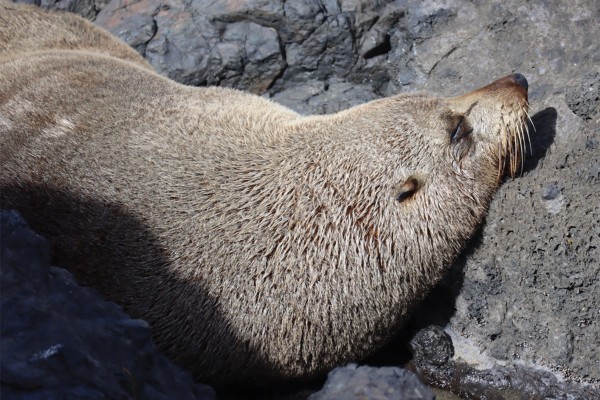On the 8th of April, the decision to completely remove the country’s Fishing-Related Mortality Limit (FRML) for rāpoke (sea lions) was quietly released on the Ministry for Primary Industries’ website with a 16-page consultation document. The FRML sets the maximum number of rāpoke deaths a southern squid trawl fishery can cause annually before being forcibly closed. The decision, orchestrated by Oceans and Fisheries Minister Shane Jones, has been widely criticised by experts, including academics from Otago University, who argue that the decision could be detrimental to the country’s sea lion population.
Speaking to Critic Te Ārohi, Jones stated that the FRML for the Auckland Islands squid fishery (known as Squid 6T) has been removed as it was “no longer fit for purpose.” In response, Otago Zoology Professor Bruce Robertson said that the “Minister’s removal of the FRML does send a concerning message to the public and the fishing industry; that message is that sea lions are no longer being impacted by trawling in New Zealand’s fisheries. I disagree with this statement.”
Two options for FRMLs were proposed in the consultation document released on April 8th. Option one set a limit of 22 sea lion captures before a fishery is closed – an option not supported by commercial fishing stakeholders. Option two, which set a limit of 46 captures, was supported by four commercial fishing stakeholders, who subsequently noted that they would prefer no FRML to be set.
When consulted on the two proposed options, the Department of Conservation noted they could only support option one, as this was the only option that agreed with the bycatch reduction goal of the Aotearoa New Zealand Biodiversity Strategy. Recommendations for the proposed policy changes were submitted by a range of actors, including DoC and commercial fishing stakeholders.
When approached for comment, DoC explained that one of the direct threats to sea lions is bycatch, but noted that “the FRML is not the most effective tool for managing fisheries’ impacts on New Zealand sea lions.” On the topic of conservation tools, Jones explained that sea lion protections included “the mandatory use of Sea Lion Exclusion Devices (SLEDs) on all squid trawl tows around the Auckland Islands.”
SLEDs, as DoC explains on their ‘Threats to Sea Lions’ web page, are “designed to allow small species, like squid, to become trapped in the net, but block sea lions from entering the net and allow them to exit through an escape hatch.” But it’s not foolproof, with DoC also warning that “animals that escape a net via a SLED may become injured by the device, which could impact their survival, or they may drown.”
Jones noted to Critic that, for the past 20 years, sea lion captures in the Squid 6T fishery have been well below the FRML that would see the fishery closed. The NZ Sea Lion Trust compares Jones’ reasoning for the removal as “removing a speed limit because everyone claims to drive below it.”
A “capture” is regarded as the entrapment of a sea lion in a trawl net, which results in the sea lion being brought up to the surface of the ocean. What captures don’t include are instances where a sea lion is harmed beneath the surface, before being ejected from the trawl. Apparently if you can’t see the harm, it doesn’t exist.
The ejection of sea lions means that fishing companies and government observers stationed on trawl vessels are unable to count the number of sea lions that encounter the net. Because of this, there is speculation as to whether sea lions are being harmed at depth by SLEDs – the very things designed to save them.
Bruce notes the lack of public evidence attesting to SLEDs’ efficiency, saying that he is “not confident at all” that these devices have greatly decreased the bycatch threat. According to Bruce, there’s a “real risk that dead sea lions can fall out of the SLED and not be detected (and hence not counted) as marine mammal bycatch” before a trawl reaches the surface.
Critic Te Ārohi TLDR’d the recent FRML removal to an Otago University student, Shaarav, who said he couldn't “see a reason to get rid of the max quota.” In his opinion, it seemed sensible to keep the FRML in place, even as a precaution, as it “sends the right message.”
The quiet nature of the change also raised an eyebrow. “This kind of thing should be a proper announcement, not buried on a website,” Shaarav told Critic Te Ārohi. “Specifically for something important like conservation choices about protected wildlife.”
Bruce tells us that the evidence of marine mammal bycatch he is after is not held by the government, but the fishing industry. “My attempts to gain access have been ongoing since 2012 and I am no closer to seeing it, so I guess the public is unlikely to get the information they deserve,” he explains.
“These decisions should be visible and backed up with the evidence,” says Bruce. “That leads to transparent decision-making."



